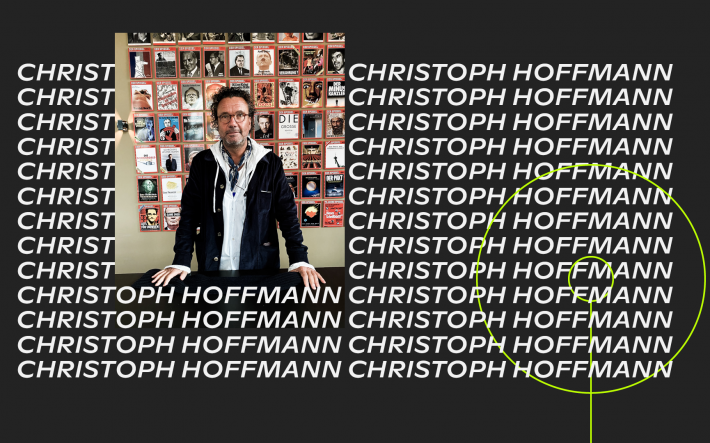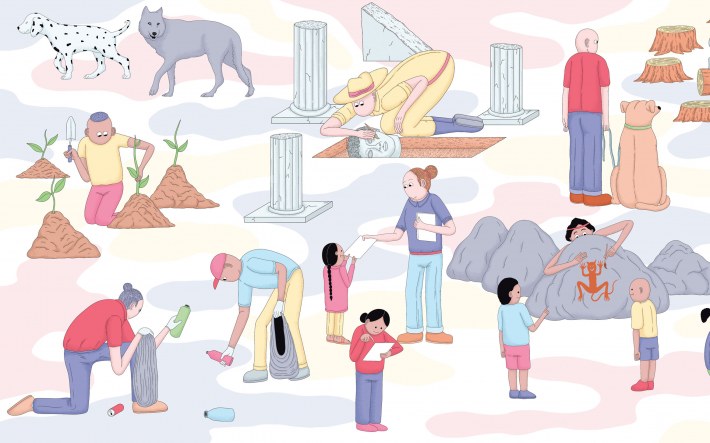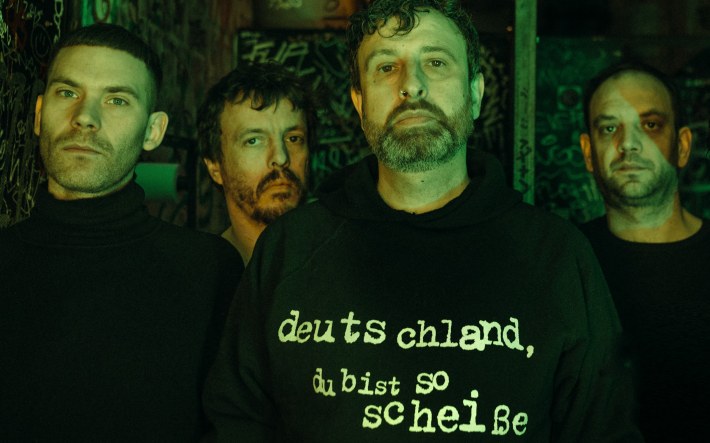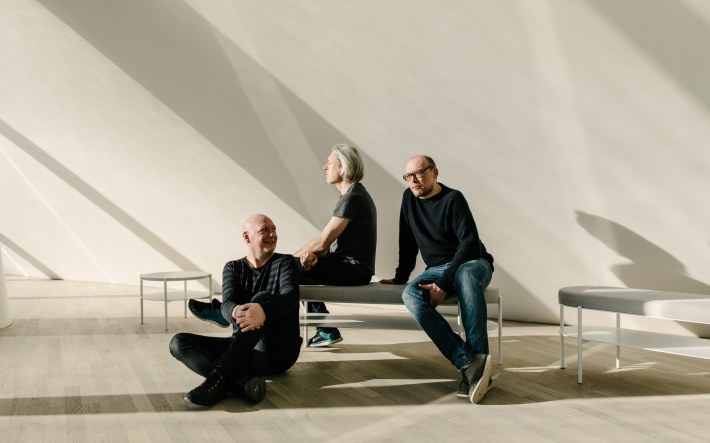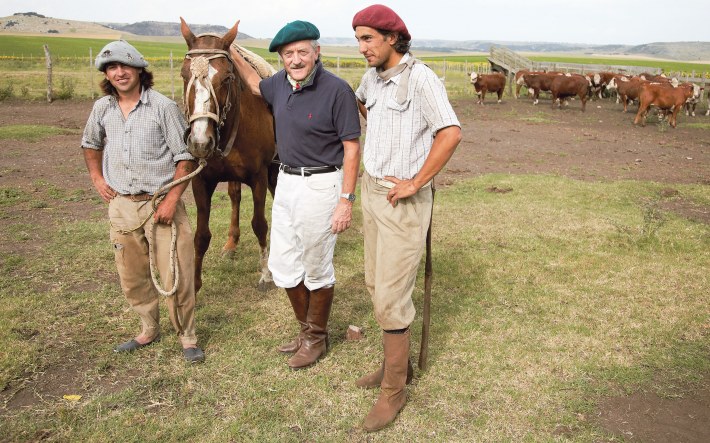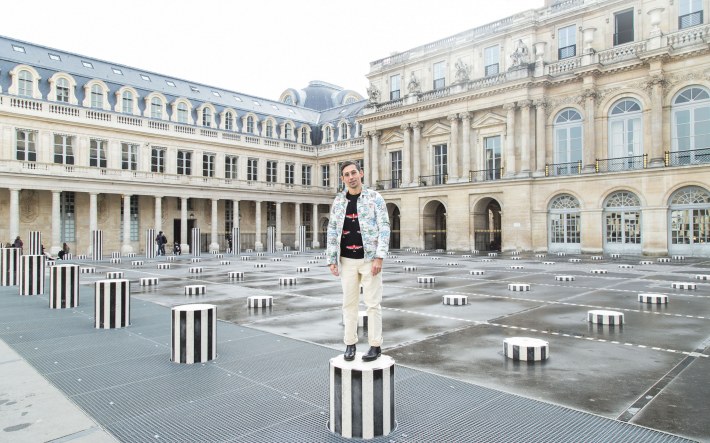Night Fever
The fashion, music, and worldly feel of the 1970s disco era captivate imaginations to this day. DJ Nicky Siano was spinning the turntables back then, while the photographer Bill Bernstein prowled the legendary Studio 54.
The trailblazers take COMPANION back to an era of glitz, glamour, and hedonism.
‘Not today, pal.’ Bill Bernstein got thoroughly fed up with hearing this standard response from bouncers, indicating yet another failed attempt at gaining entry to Studio 54. It’s one of those ironic twists of fate that Bill ended up becoming one of the legendary club’s most revered chroniclers. The photographer finally made it into disco’s holiest of holies during a highly official event: it was 1977, and a massive knees-up had been planned in honour of Lillian Carter, mother of President Jimmy Carter. On the guest list of the black tie event was the crème de la crème of New York’s high society, seated at white-clothed tables. The media was in a frenzy. Bill shot the event for the Village Voice, a weekly mag — and hid in the corner of the club after dinner.
Eventually, the assembled VIPs retreated elsewhere, and the dancefloor was opened for Studio 54 regulars: New York’s party animals. ‘I used up all the film I’d brought with me that night,’ Bill remembers. The evening marked a coming-of-age moment for him — and not just as a photographer.
‘I was kind of into the flower power scene,’ he says. ‘But I never really noticed how hippies rigidly followed a set of rules as well. You had to look, speak, and behave in a certain way. Disco was different. The people there were truly liberated.’
New York City could be a dangerous place in the late 1970s. Criminality was at an all-time high, the public coffers had been bled dry, and the politicians were out of their depth trying to deal with the city’s problems. There was a pervasive sense of uncertainty hanging in the air, and discrimination against minorities was rife: ‘Gay people couldn’t just go out on the street and be who they were,’ says Nicky Siano. ‘They would have been killed in the precincts of New York.’ Nicky grew up in New York and was hailed a wunderkind of disco from its earliest days. He played his first gig at the age of 16 and quickly earned a reputation as the best DJ in town. His style was different, and the tunes he played came from the underground scene of whomping soul and funk. After opening Studio 54 in April 1977, club Svengali Steve Rubell hired Nicky as the resident DJ. So Nicky was there in the thick of things, unlike photographer Bill Bernstein, who tended to visit the club as an observer. ‘The club was a place for people to be who they truly were,’ he says. ‘Gay, bisexual, or trans? Fetishists? Come on in! Were you from LatinAmerica? African American? Everyone was welcome, and nobody had to be afraid.
’Nicky and Bill were merely acquaintances at the time, not friends. But today, they often look back together on an era that revolutionised clubbing with its flamboyant looks, sounds, and rhythms. Bill’s photos — which also adorn the walls of Monkey Bar at 25hours Hotel Bikini Berlin — testify to his fascination with the characters that populated New York’s underground party scene. An evident fan, he portrayed a subculture in which inhibition was the only sin — in full awareness of the bleak New York reality that awaited clubbers at the end of the night. Excess, wild dance moves, and raw sex embodied this spirit of unleashed hedonism.
One of Bill’s most famous pictures shows a couple on a swing. Sporting the briefest of shorts, a man sits astride his partner as they swoosh above the heads of the revellers below, completely oblivious and ecstatic. Like many of the partygoers that Bill photographed, they remain unaware of the man with the camera. ‘Times were different back then,’ says Bill. ‘The club wasn’t full of people taking selfies with their smartphones, and as a photographer, I was just part of the inventory.’ It’s important for him to emphasise that no one was posing for him. ‘The punters at Studio 54 had attitude and aura — whether or not I was there. Even the motifs that look staged were actually snapshots,’ he says. ‘And if they did throw poses, it was for each other, not my camera.’
The tumultuous party of the New York disco movement was over as quickly as it began. ‘Commercialisation killed everything,’ says Nicky. ‘Soon it was all about money, and the bouncers started picking the crowd. The idea was to create a legend — but above all, to make millions.’ Fascination with the glamorous dancefloor world soon flipped into hype, and the revolution began to devour its children. Washed-out musicians and the blight of drugs are just a couple of the shadows that even the prettiest disco ball would cast. ‘Everyone knew that we might end up playing with fire,’ says Nicky. Parties and drugs became an escape from reality, and it was easy to lose touch, especially as a young, celebrated DJ. ‘You need to look after yourself, and above all learn what really matters in life,’ he adds. ‘It’s about the people you love, and your health.
’Studio 54 shut down in 1980, just three years after it opened. It was the beginning of the end for an entire era. But the mood of the club, its 1960s roots, and the role it played in the LGBTIQA+ movement in the decades to come continue to reverberate today, with people of all sexual orientations publicly demanding that their rights be respected. ‘The age of disco played a part in that as well,’ says Bill, adding, ‘I am convinced that the strong sense of community and liberation that pervaded the clubs gave people courage.’ When Bill speaks of his pictures and the 1970s, you can tell that he remains utterly fascinated with the scene. ‘It was a special time,’ he says. ‘Its legacy persists to this day.’


